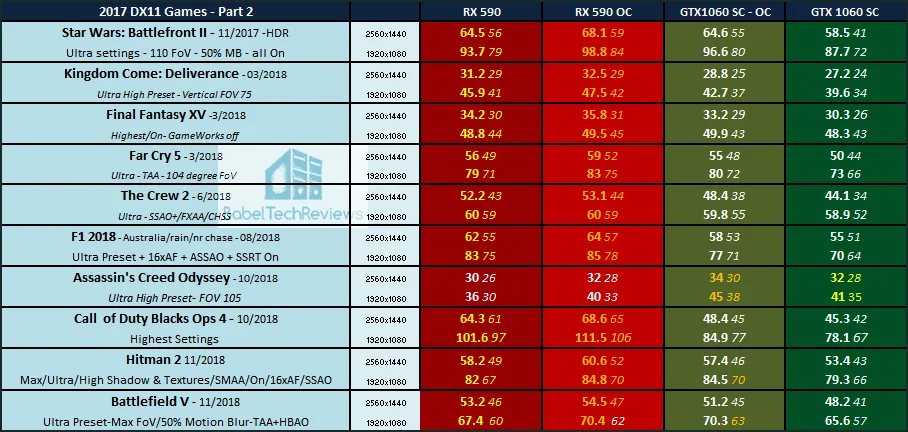The Red Devil RX 590 vs. the EVGA GTX 1060 SC 6GB Overclocking Showdown with 37 Games
This overclocking showdown is a follow-up to the PowerColor Red Devil RX 590 8GB versus the EVGA GTX 1060 SC 6GB evaluation yesterday. Today, we have optimized our overclocks with all performance options set to their highest limits to get the most performance from each card.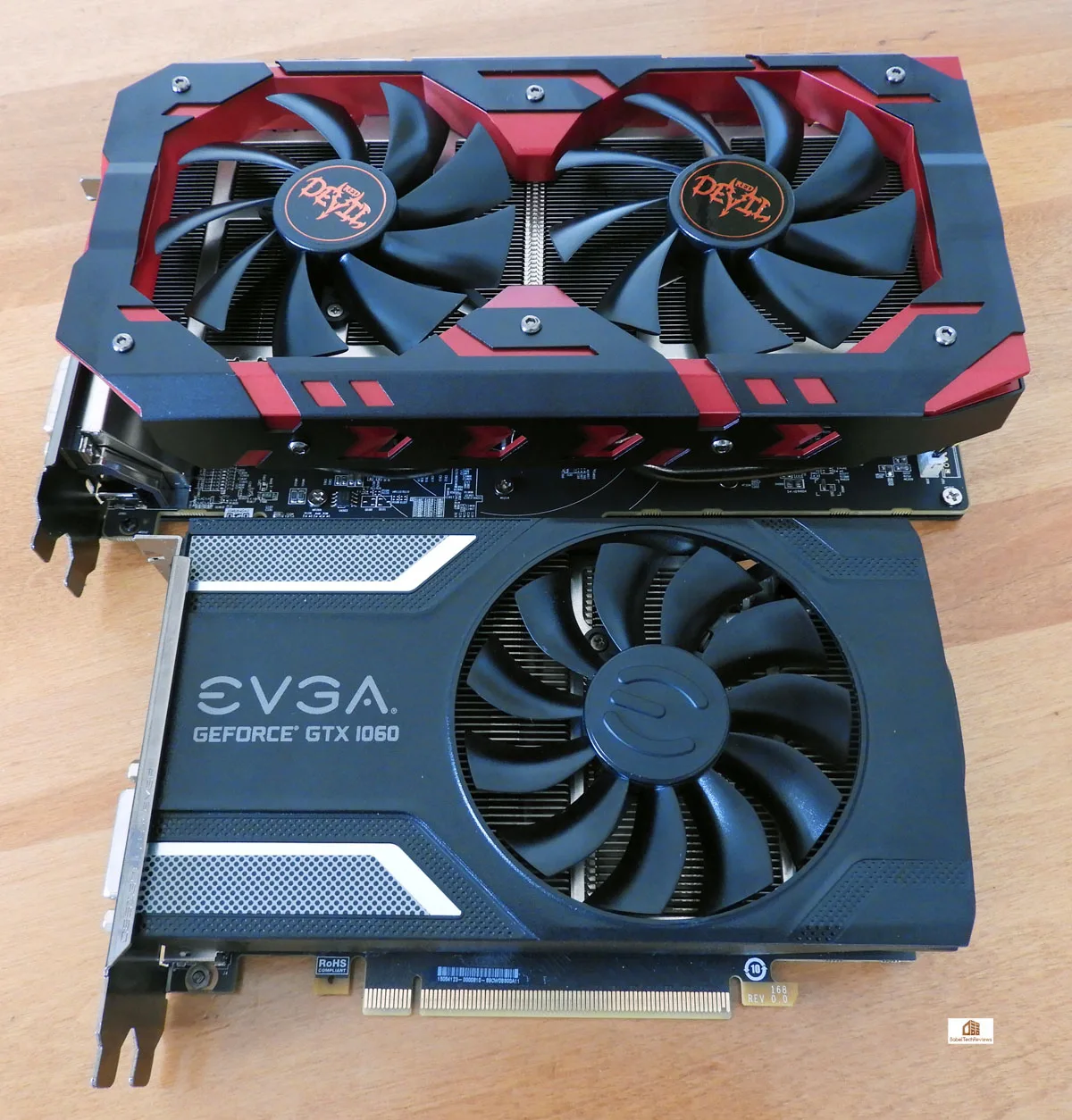
At stock, the PowerColor overclocked Red Devil-clocked RX 590 won decisively over the EVGA GTX 1060 SC 6GB. This time, we will overclock the EVGA GTX 1060 SC and the Red Devil RX 590 manually each as far as they will go to see where they stand in relation to each other when fully overclocked.
The Red Devil RX 590 OC
The $279 Red Devil version of the RX 590 8GB is factory overclocked up to its maximum boost speeds of 1576MHz, up from the reference 1545MHz. A few details of our original overclocking may be found here. We found that as long as the the Power and Temperature limits are maximized, it will not throttle even with the Silent BIOS profile.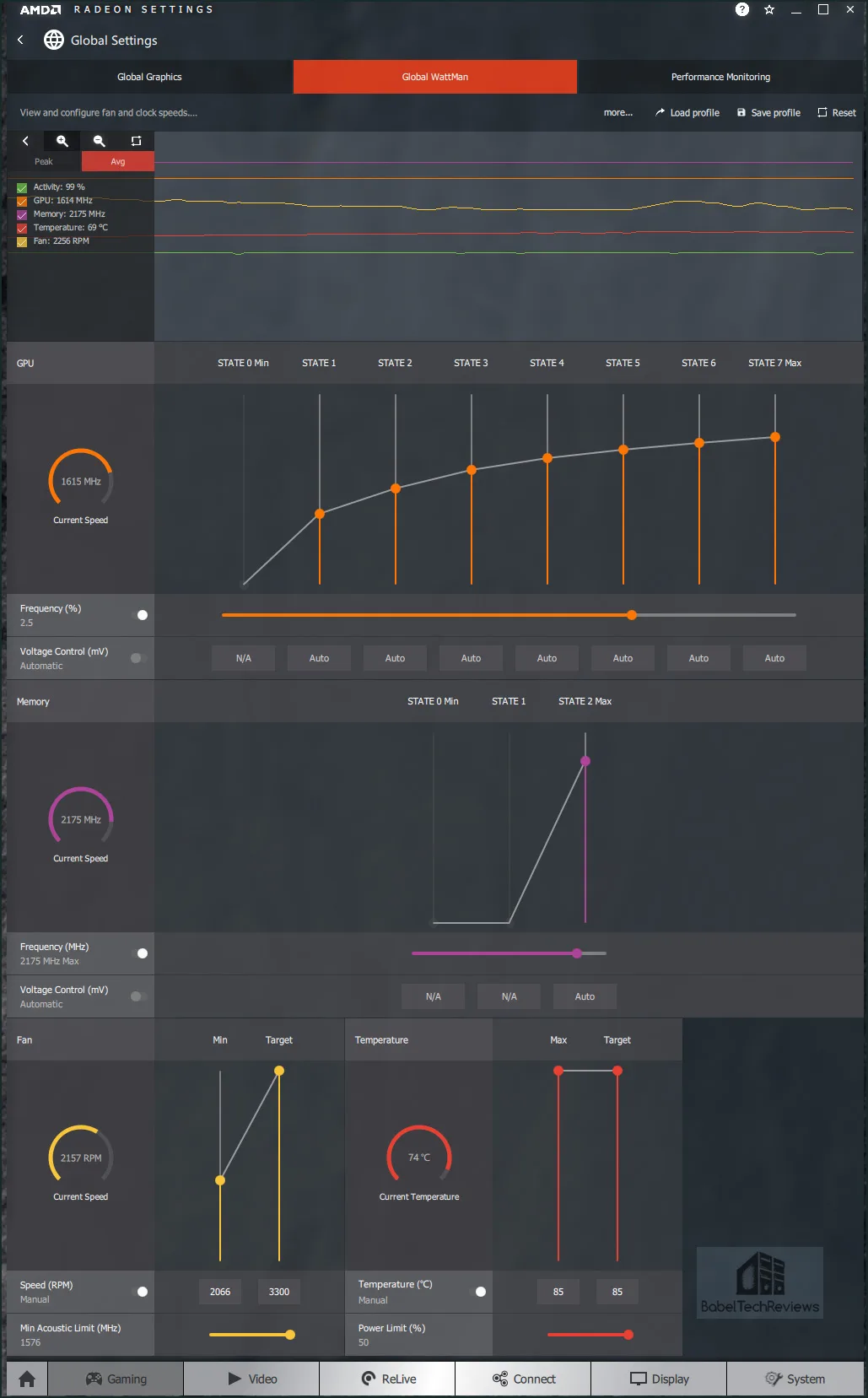
After much testing, we settled on a 2.5% overclock or +40MHz to the core for a 1615MHz boost, with memory clocks overclocked +175MHz to 2175MHz. We found that higher memory clocks gained significant performance over a slightly higher core overclock. Adjusting the voltage – undervolting or undervolting – made no practical difference, and we achieved stability in all of our 37 tested games – except for Wolfenstein: The New Colossus which tolerated no overclock.
Overclocking the EVGA GTX 1060 SC 6GB
We devoted a separate evaluation to the EVGA GTX 1060 SC 6GB which you can read here. It currently is priced at $259. 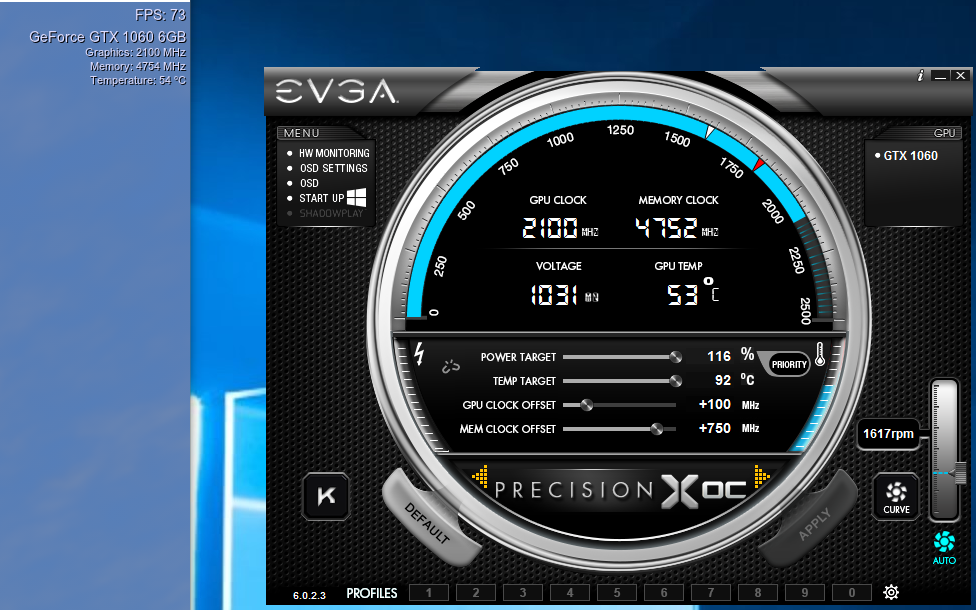 As before, we achieved a final stable overclock of +100 MHz to the core which settled in around 2088MHz with GPU Boost. This time our memory overclock reached +650MHz for its clock of 4655MHz.
As before, we achieved a final stable overclock of +100 MHz to the core which settled in around 2088MHz with GPU Boost. This time our memory overclock reached +650MHz for its clock of 4655MHz.
Testing Platform
We test 37 games and 2 synthetic benchmarks at 1920×1080 and at 2560×1440. We have just added Battlefield V and Hitman 2 which both released this week.  Our testing platform is a recent install of Windows 10 64-bit Home Edition, and we are using an i7-8700K which turbos all 6 cores to 4.7GHz, an EVGA Z370 FTW motherboard, and 16GB of HyperX DDR4 3333MHz. The games, settings, and hardware are identical except for the cards being compared.
Our testing platform is a recent install of Windows 10 64-bit Home Edition, and we are using an i7-8700K which turbos all 6 cores to 4.7GHz, an EVGA Z370 FTW motherboard, and 16GB of HyperX DDR4 3333MHz. The games, settings, and hardware are identical except for the cards being compared.
Before we run our overclocked benchmarks, let’s check out the test configuration.
Test Configuration – Hardware
- Intel Core i7-8700K (HyperThreading and Turbo boost are on to 4.7GHz for all cores; Coffee Lake DX11 CPU graphics).
- EVGA Z370 FTW motherboard (Intel Z370 chipset, latest BIOS, PCIe 3.0/3.1 specification, CrossFire/SLI 8x+8x), supplied by EVGA
- HyperX 16GB DDR4 (2x8GB, dual channel at 3333 MHz), supplied by HyperX
- PowerColor Red Devil RX 590 8GB, at stock Red Devil clocks, supplied by PowerColor
- EVGA GTX 1060 SC 6GB, at stock SC clocks, supplied by EVGA.
- 2 x 480 GB Team Group SSD; One for AMD and one for NVIDIA
- 1.92 TB San Disk enterprise class SSD
- 2 TB Micron 1100 SSD
- Seasonic 850W Gold Focus power supply unit
- EVGA CLC 280mm CPU water cooler, supplied by EVGA
- Onboard Realtek Audio
- Genius SP-D150 speakers, supplied by Genius
- EVGA DG-77, mid-tower case supplied by EVGA
- Monoprice Crystal Pro 4K
Test Configuration – Software
- GeForce 416.94 WHQL drivers are used for the EVGA GTX 1060 SC.
- AMD’s Adrenalin Software 18.8.40 (Press Launch Drivers) are used for the RX 590.
- VSync is forced off.
- AA enabled as noted in games; all in-game settings are specified
- Gaming results show average frame rates in bold including minimum frame rates shown on the chart next to the averages in a smaller italics font.
- Highest quality sound (stereo) used in all games.
- Windows 10 64-bit Home edition latest version 1809. All DX11 titles were run under DX11 render paths. DX12 titles are generally run under the DX12 render path unless performance is lower than with DX11. Three games use the Vulkan API.
- Latest DirectX
- All 37 games are patched to their latest versions at time of publication.
- Wattman used for settings and for the stock and overclocked RX 590.
- MSI Afterburner, latest beta for the stock and overclocked GTX 1060.
- OCAT, latest version
- Fraps, latest version
37 PC Game benchmark suite & 4 synthetic tests
Synthetic
- Firestrike – Ultra & Extreme
- Time Spy DX12
DX11 Games
- Grand Theft Auto V
- The Witcher 3
- Fallout 4
- Watch Dogs 2
- Just Cause 3
- Rainbow Six Siege
- Battlefield 1
- Resident Evil 7
- For Honor
- Ghost Recon Wildlands
- Mass Effect: Andromeda
- Prey
- DiRT 4
- Project CARS 2
- Middle Earth: Shadow of War
- Destiny 2
- Star Wars: Battlefront II
- Final Fantasy XV
- Far Cry 5
- The Crew 2
- Assassin’s Creed: Odyssey
- Call of Duty: Black Ops 4
- Hitman 2
- Battlefield V
DX12 Games
- Tom Clancy’s The Division
- Ashes of the Singularity: Escalation
- Hitman
- Rise of the Tomb Raider
- Deus Ex Mankind Divided
- Gears of War 4
- Civilization VI
- Sniper Elite 4
- Total War: Warhammer II
- Forza 7
- Shadow of the Tomb Raider
Vulkan Games
- DOOM
- Wolfenstein: The New Colossus
- Strange Brigade
AMD Control Center Radeon Settings
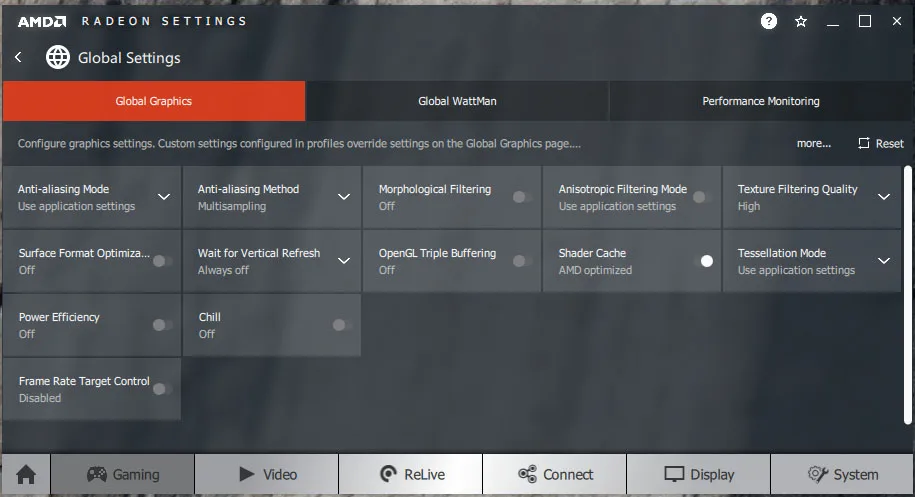 All AMD settings are set so as to be apples-to-apples when compared to NVIDIA’s control panel settings – all optimizations are off, Vsync is forced off, Texture filtering is set to High, and Tessellation uses application settings.
All AMD settings are set so as to be apples-to-apples when compared to NVIDIA’s control panel settings – all optimizations are off, Vsync is forced off, Texture filtering is set to High, and Tessellation uses application settings.
We used Wattman to overclock the RX 590, and power, temperature and fan limits are set to their maximums to prevent throttling.
NVIDIA Control Panel settings
Here are the NVIDIA Control Panel settings.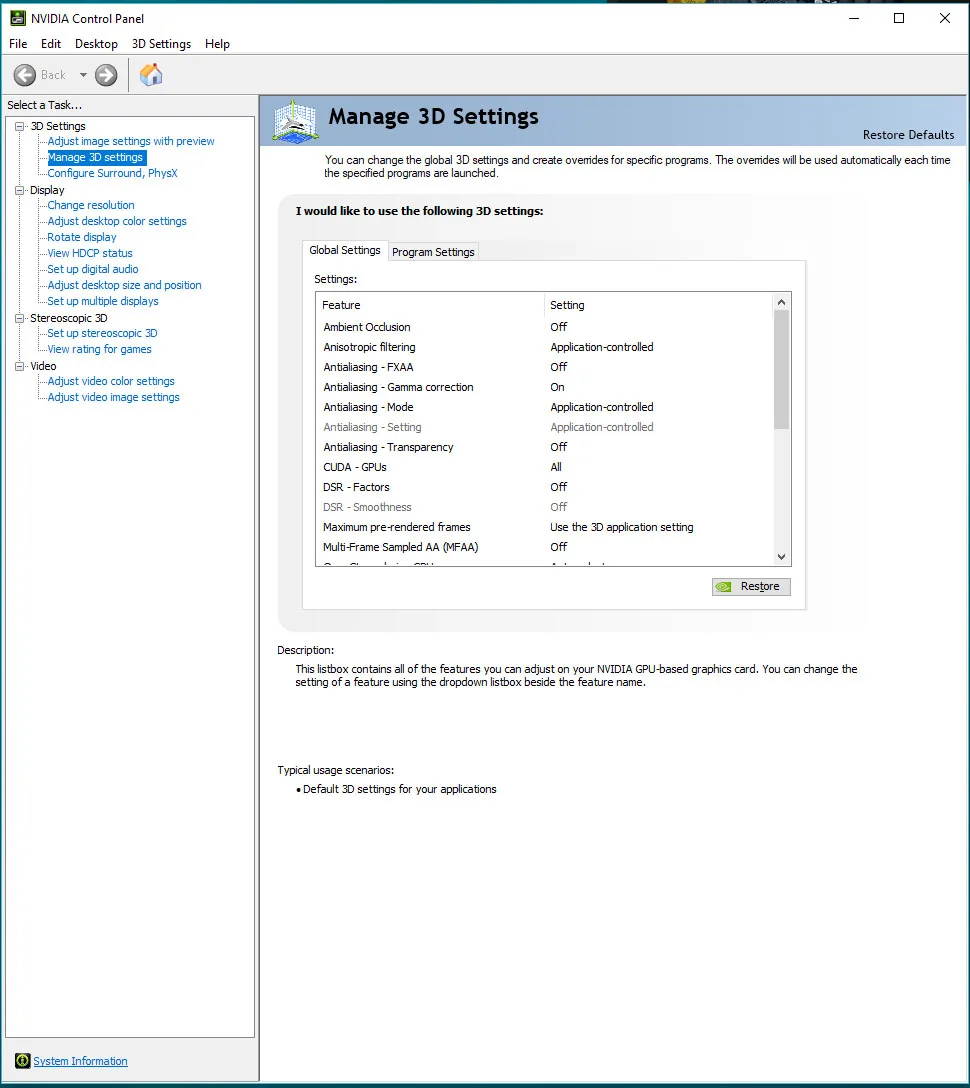
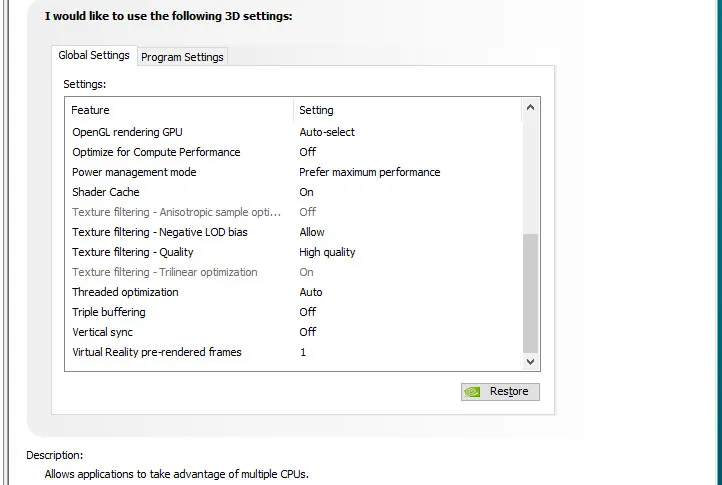 We used MSI’s Afterburner to set our GTX 1060’s highest Power and Temperature targets. By setting the Power Limits and Temperature limits to maximum for each of our two test cards card, they do not throttle, but they can each reach and maintain their individual maximum clocks while overclocked.
We used MSI’s Afterburner to set our GTX 1060’s highest Power and Temperature targets. By setting the Power Limits and Temperature limits to maximum for each of our two test cards card, they do not throttle, but they can each reach and maintain their individual maximum clocks while overclocked.
Performance summary charts
Here are the performance results of 37 games and 2 synthetic tests comparing the stock and overclocked Red Devil RX 590 8GB versus the stock and overclocked EVGA GTX 1060 6GB SC. The highest settings are always chosen and the settings are listed on the charts. The benches were run at 1920×1080 and at 2560×1440.
Most gaming results show average framerates in bold text, and higher is better. Minimum framerates are next to the averages in italics and in a slightly smaller font. A few games benched with OCAT show average framerates but the minimums are expressed by frametimes in ms where lower numbers are better.
The first column shows the Red Devil RX 590’s stock performance. Column two represents the Red Devil RX 590’s overclocked performance, and Column three represents the GTX 1060 SC overclocked performance. The last column represents the GTX 1060 SC’s stock performance. Wins between the RX 590 and the GTX 1060 are shown by yellow text, and both sets of numbers are in yellow if they are equal.
We see the stock-clocked Red Devil RX 590 is significantly faster than the stock EVGA GTX 1060 6GB SC overall, winning most of our 37 game benchmarks. Although the GTX 1060 SC gained some ground from manual overclocking, it is still no match for the manually overclocked Red Devil RX 590 which maintains its large lead as it is also a very good overclocker.
Let’s check out conclusion.
Conclusion
This has been quite an interesting exploration for us in evaluating the overclocked Red Devil RX 590 versus the overclocked EVGA GTX 1060 SC 6GB. Both stock and overclocked, the EVGA GTX 1060 SC is a slower card and the PowerColor Red Devil RTX 590 maintains its performance advantage. Both cards appear to scale well with each of their respective overclocks.
Next up, we will review RTX performance and Battlefield V. So far, we really like the single-player War Stories. Stay tuned.
Happy Gaming!



